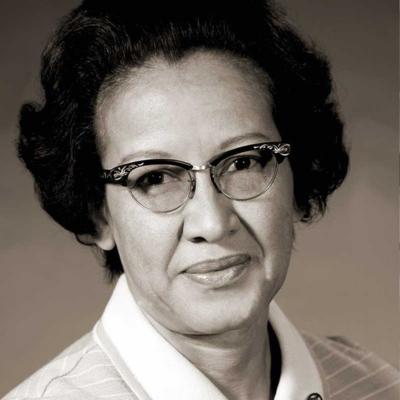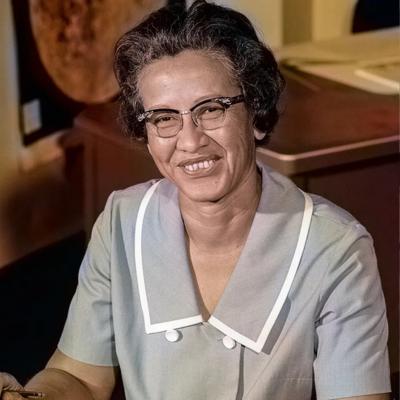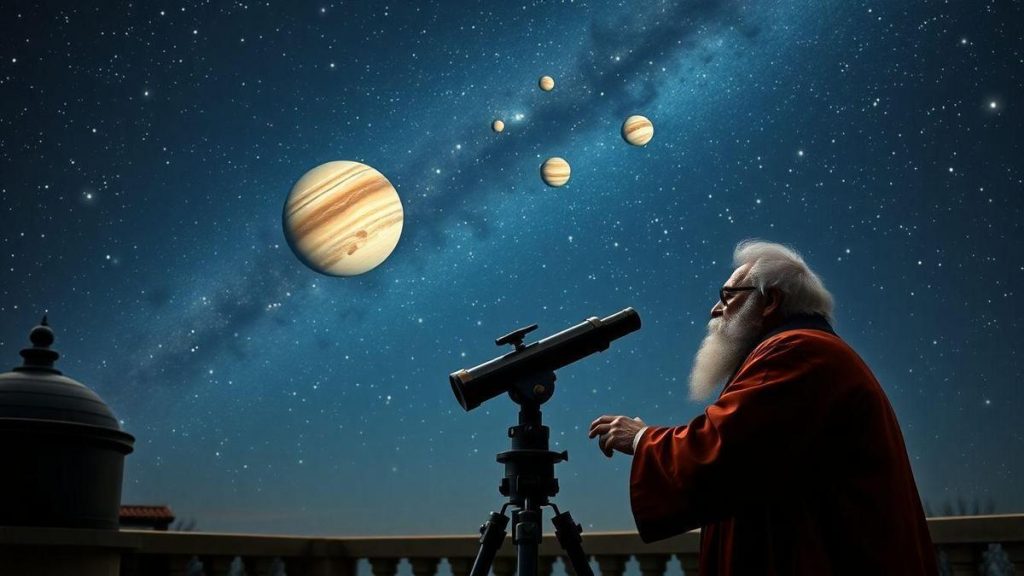Katherine Johnson, an African-American mathematician, was a key figure in the United States space program, especially in the Apollo missions that took the first humans to the Moon. Her work with complex calculations was essential in ensuring the success of the missions, as she calculated the necessary flight trajectories to safely reach and land on the Moon. The importance of her contributions cannot be underestimated, as they were crucial to the historic success of the Apollo 11 mission in 1969.
With a deep understanding of physics and analytical geometry, Katherine Johnson applied sophisticated mathematical models that not only guided astronauts on their journeys but also helped avoid potential catastrophic failures. Her ability to perform precise and complex calculations was vital to the advancement of space exploration, and her legacy continues to inspire scientists and engineers around the world.

The Mathematics Behind the Apollo Missions
Mathematics played a fundamental role in the Apollo missions, and Katherine Johnson was one of those responsible for applying the concepts of analytical geometry to calculate the trajectories of the spacecraft. Her meticulous and detailed approach helped define the best trajectory for the spacecraft to safely reach the Moon. These calculations were complex and involved several factors, such as the gravity of the Earth and the Moon, as well as the spacecraft’s speed.
Johnson also had to consider variables like Earth’s rotation and the spacecraft’s ascent and descent angles. Every small error could result in a catastrophic failure, so the accuracy of the calculations was essential. Her ability to handle these complex mathematical challenges was crucial in ensuring the safety of the Apollo missions, especially Apollo 11.
Johnson’s Contribution to Space Flight
Katherine Johnson was responsible for several spacecraft trajectory calculations that were vital to the planning of the missions. She not only determined the spacecraft’s routes but also helped define the launch windows and the ideal times for landing on the Moon. These calculations were fundamental in ensuring the success of the crewed missions, helping plan the phases of the journey from launch to reentry into Earth’s atmosphere.
Furthermore, her experience was not limited to the Apollo missions but also influenced the development of future space missions. Johnson’s work helped shape the standards of space navigation that are followed today, directly impacting how missions are planned and executed.
Katherine Johnson’s Influence on Future Generations

Katherine Johnson’s legacy goes beyond the Apollo missions. Her story is a source of inspiration for many women and minorities pursuing careers in science, technology, engineering, and mathematics (STEM). Johnson proved that, regardless of one’s background or gender, anyone can achieve great feats in the field of science and mathematics.
She was one of the pioneers who opened doors for future generations of scientists and engineers, especially those from underrepresented groups. Her contribution to space exploration not only ensured the safety of historic missions but also inspired a shift in the perception of women and people of color in science and mathematics.
The Impact of Johnson’s Calculations on Space Exploration
Katherine Johnson also played a key role in the mathematical modeling that influenced long-term space exploration. Her calculations were not only essential for the Apollo missions but helped establish the foundation for future space missions. The development of accurate mathematical models was crucial to ensure the spacecraft’s trajectories were safe and efficient.
These models also served for the development of more advanced space navigation systems, influencing how astronauts are guided on their space journeys. The impact of her work is still visible today, with complex mathematical calculations still being used to design modern space missions.
The Relevance of Katherine Johnson in Modern Space Navigation
The calculations made by Katherine Johnson helped pave the way for modern space navigation. Her contribution was essential to the development of more precise navigation systems, which are now used to explore space with greater safety and efficiency. These systems rely on complex mathematical calculations that are largely based on Johnson’s work.
Additionally, her collaborative approach, which involved integrating different areas of knowledge, was crucial to the development of these systems. The ability to work as a team with engineers and scientists from various disciplines helped create the foundation for space exploration as we know it today, with multidisciplinary teams working together to solve complex challenges.
How Katherine Johnson and the Mathematical Calculations That Took Humans to the Moon Work

Katherine Johnson, an African-American mathematician, played a key role in the success of the United States space program, especially during the Apollo missions that culminated in the arrival on the Moon in 1969. Her expertise in mathematics, particularly in analytical geometry, enabled her to perform complex calculations crucial to the trajectories of the space missions. Johnson’s work involved determining the flight paths of the spacecraft, ensuring that they could launch, orbit, and land on the Moon safely. The calculations she performed were not mere academic exercises; they had real-world implications that could mean the difference between success and failure in space exploration.
The mathematical calculations Johnson carried out were based on a deep understanding of physics and engineering principles. These calculations encompassed a wide range of factors, including gravitational forces, spacecraft velocity, and ascent and descent angles. Johnson had to consider variables like Earth’s rotation and the Moon’s gravitational force, requiring a high level of precision. The mathematical models she created were instrumental in guiding the spacecraft through various phases of its journey, from launch to reentry. Johnson’s contributions to the calculations that took humans to the Moon were not only innovative for her time but also set the stage for future advances in space exploration.
Advantages of Katherine Johnson and the Mathematical Calculations That Took Humans to the Moon
The advantages of Katherine Johnson’s mathematical calculations go far beyond the immediate success of the Apollo missions. One of the most significant benefits was the establishment of a framework for future space exploration. Johnson’s work demonstrated the importance of rigorous mathematical analysis in planning and executing space missions. This framework was adopted by subsequent generations of scientists and engineers, ensuring that future missions would be grounded in solid mathematical principles.
Another benefit of Johnson’s calculations is their role in increasing safety during space travel. By accurately predicting flight paths and potential hazards, her work contributed to the development of safety protocols that are still in use today. This focus on safety is crucial in a field where risks are incredibly high, and any miscalculation could lead to catastrophic consequences. Johnson’s meticulous attention to detail and commitment to accuracy left a lasting legacy in the field of aerospace engineering.
In addition to safety and the establishment of frameworks, Johnson’s calculations also promoted greater collaboration between scientists and engineers. Her work required contributions from multiple disciplines, including physics, engineering, and computer science. This interdisciplinary approach not only enriched the quality of the calculations but also encouraged teamwork and communication among professionals from different backgrounds. The collaborative spirit Johnson embodied became a hallmark of modern space exploration, where diverse teams work together to tackle complex challenges.
Finally, Katherine Johnson’s contributions to the mathematical calculations that took humans to the Moon inspired countless people, especially women and minorities, to pursue careers in STEM (Science, Technology, Engineering, and Mathematics) fields. By breaking barriers and demonstrating that excellence in mathematics is achievable, Johnson served as a role model for future generations. Her legacy continues to motivate young people to engage with mathematics and science, ensuring a diverse and talented workforce for the future of space exploration.
How Katherine Johnson and the Mathematical Calculations That Took Humans to the Moon Helped Shape Space Exploration
- Understanding orbital mechanics: Katherine Johnson’s work emphasized the importance of understanding the principles of orbital mechanics, which govern how spacecraft move in space. Her calculations helped define the trajectories spacecraft needed to follow to reach their destinations safely.
- Importance of trajectory analysis: The trajectory analysis conducted by Johnson was critical to planning the spacecraft’s routes. This analysis involved complex calculations that took several factors into account, including gravitational forces and the spacecraft’s velocity.
- Role in the Apollo missions: Johnson’s contributions to the Apollo missions were instrumental in ensuring their success. Her calculations provided the necessary data for mission planners to make informed decisions about launch windows and flight paths.
- Contributions to human spaceflight: Johnson’s work laid the groundwork for human spaceflight, demonstrating that precise mathematical calculations are essential for the safety and success of missions involving human crews.
- Significance of mathematical modeling: The mathematical models developed by Johnson were not only applicable to the Apollo missions but also served as a foundation for future space exploration efforts. These models continue to inform the design and execution of space missions today.
- Impact on future space navigation: Johnson’s calculations had a lasting impact on how space navigation is conducted. Her pioneering work influenced the development of advanced navigation systems that rely on complex mathematical algorithms.
Katherine Johnson’s mathematical calculations were a cornerstone of the success of the Apollo missions and had a profound impact on the field of space exploration. Her work shaped how future missions are planned and executed, ensuring that the legacy of her contributions continues to influence the trajectory of human spaceflight.
Did You Enjoy Learning About Katherine Johnson and the Mathematical Calculations That Took Humans to the Moon?
Katherine Johnson’s remarkable journey and her contributions to mathematics and space exploration are not only inspiring but also serve as a testament to the power of perseverance and intellect. Her legacy continues to resonate, encouraging future generations to explore the fields of science and mathematics. Understanding her impact on reaching the Moon is a crucial part of appreciating the history of space exploration.
As we reflect on Katherine Johnson’s achievements, it becomes clear that her work was not just about numbers and equations; it was about breaking barriers and creating opportunities for others. Her story is a reminder that with determination and skill, remarkable feats can be achieved, paving the way for a brighter future in space exploration and beyond.
Frequently Asked Questions
Who was Katherine Johnson?
Katherine Johnson was a brilliant mathematician at NASA. She helped calculate spacecraft flight trajectories. Her work was essential in taking humans to the Moon.
How did Katherine Johnson help in the space race?
She made important calculations for the Apollo missions. This helped with navigation and landings on the Moon. Without her numbers, the mission could have failed.
Why are Katherine Johnson’s contributions important?
Her contributions showed that women and people of color can have a significant impact. She broke barriers and inspired many around the world.
What specific calculations did Katherine Johnson make?
Katherine worked on several navigation calculations. This included the Apollo 11 trajectory to the Moon. Her calculations helped ensure the astronauts’ safety.
Where can I learn more about Katherine Johnson and her achievements?
You can read books and watch movies like “Hidden Figures.” Many online resources also discuss Katherine Johnson and the calculations that took humans to the Moon.




